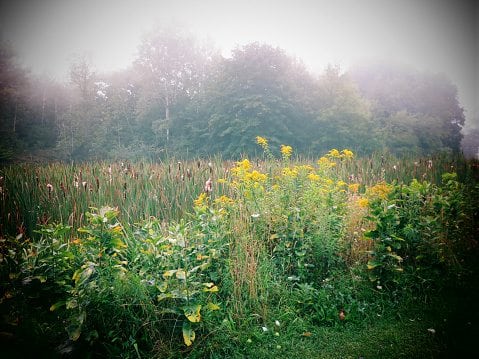Ragweed, the rogue plant that infiltrates our gardens and boundaries each year, is best known as a menace to allergy sufferers. A single ragweed plant can produce more than 1 billion grains of pollen each season. Ragweed is responsible for an estimated 100 million tons of pollen in the United States each year.
Are your eyes watering yet? Ragweed pollen is an allergy trigger that arrives in Connecticut each spring and lasts until late September, sometimes into October depending on the previous winter’s weather. Outdoor mold, another allergy trigger, peaks in July through late summer yet persists in fall by growing on fallen leaves, soil and compost piles. Mold also thrives indoors in humid conditions. For many Connecticut homeowners, that makes a basement humidifier mandatory in the summer and early fall. But mold spores can also thrive in the dampness of a bathroom or kitchen sink area.
Most people know the symptoms as hay fever — sneezing, stuffy nose, sinus pressure, watery eyes and itchy eyes, nose and even roof of the mouth — but the medical term is allergic rhinitis. Besides ragweed and mold spores, triggers include pollens from trees, grasses and other weeds. It’s not just pollen from local plants. Once airborne, pollen can travel hundreds of miles. (Greetings, Ohio allergens!) Some people are also sensitive to dust mites, which populate the house in the humid summer before getting whipped into the air when you turn on the heat for the first time in the fall.
More than 50 million Americans deal with allergies each year. In the past 12 months, estimates the Centers for Disease Control and Prevention, 19.1 million adults have been diagnosed with hay fever. For sheer allergy agony, Connecticut rated middle-of-the-pack in the Asthma and Allergy Foundation of America’s Allergy Capitals 2016 survey of the 100 “most challenging places to live with spring allergies.” The Hartford metropolitan area ranked 56th, down from 47th the previous year, New Haven 57th (down from 39th) and Bridgeport 69th (down from 55th). Pity the residents of Jackson, Miss., Memphis, Syracuse and Louisville, the top (as in worst for allergy sufferers) areas in the survey.
Ragweed, like flowers and strawberries, no doubt welcomes climate change with its higher temperatures and higher levels of carbon dioxide. “You get a much bigger plant and about 10 times more ragweed pollen,” Lewis Ziska, a U.S. Department of Agriculture plant physiologist, told NBC’s “Today.”
An allergist can determine exactly what causes your allergy symptoms by exposing your skin to specific allergens, pricking it, then checking for a reaction such as a small, itchy bump. That kind of reaction means you’re allergic. A blood test also might help. Allergen immunotherapy, commonly known as allergy shots, then can provide relief for many people without medication. The shots contain a small amount of a specific allergen to stimulate your immune system without causing an actual itchy-watery-congested reaction.
Help yourself by:
- Showering at night so you don’t bring pollen picked up during the day into your bed.
- Knowing when pollen is at its highest levels: check your favorite pollen-tracker app or
- Close windows in the home and car on days with high pollen counts.
- Start taking your medication, whether prescription or over-the-counter, before the allergy season starts.
- Clean your pets frequently: They’re carriers of dander, pollen (if they go outside) and other allergens.
- Do not dry your clothes outdoors.
- Remove decaying leaves from gutters and around the yard.
If you think you’re suffering from seasonal allergies, consult your primary care physician. To find a physician or schedule an appointment, please visit the Hartford HealthCare Medical Group website.

